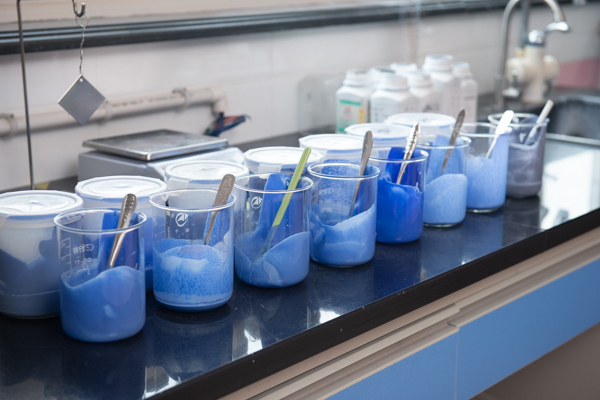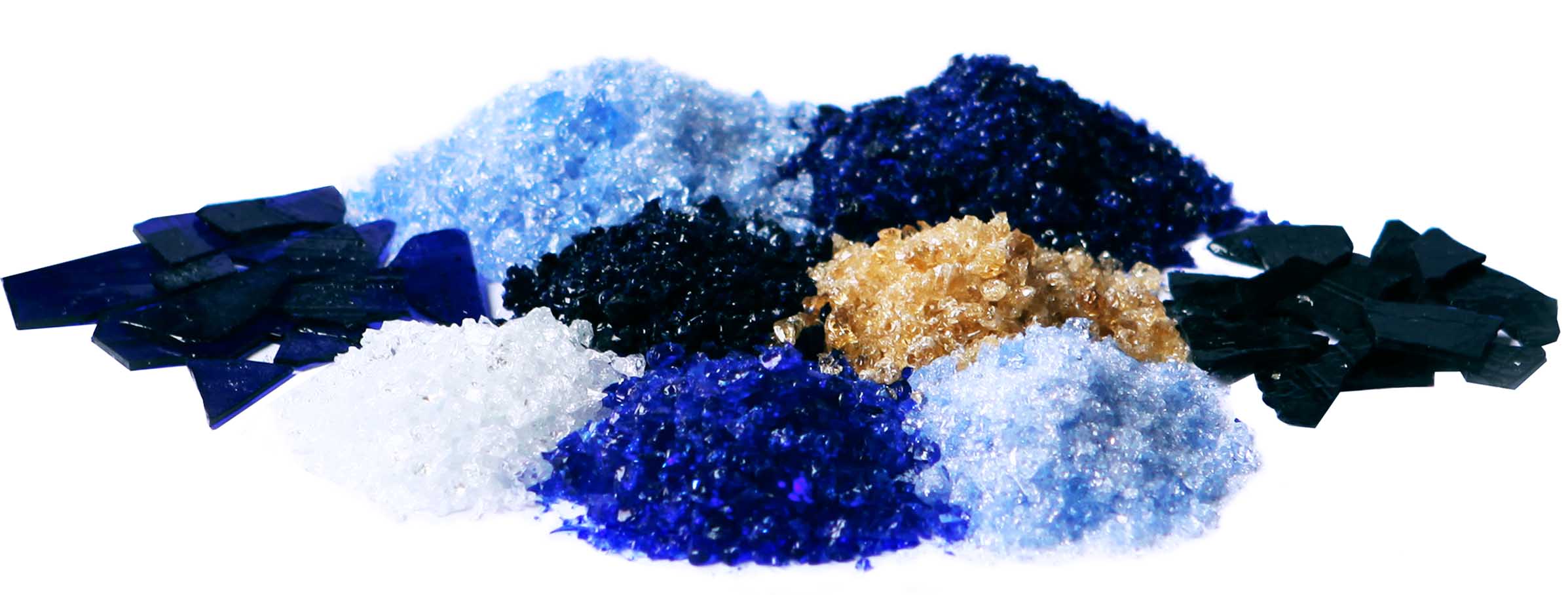1. Preparation and spraying of glass-lined glaze slurry
7.2.1 Preparation and spraying of glass-lined glaze slurry
7.2.1.1 Preparation of glass-lined glaze slurry should be carried out in accordance with the instructions provided by the glass-lined glaze supplier. After the glaze slurry is prepared, it should be prevented from contamination and kept in a uniform suspension state during use.
7.2.1.2 The compressed air used for spraying glass-lined glaze slurry should be kept clean, and the spraying pressure should be kept stable during the spraying process.
The old version is as follows:
8.3 Preparation and spraying of glaze slurry
8.3.1 Preparation of glaze slurry should be carried out in accordance with the instructions provided by the glass-lined glaze manufacturer; after the glaze slurry is prepared, it should be prevented from contamination and kept in a uniform suspension state during use.
8.3.2 The compressed air used for spraying glaze slurry should be dry and clean. It is strictly forbidden to mix oil, water and dust, and the pressure of compressed air should be kept stable during spraying.
8.3.3 The glaze slurry spraying layer should be uniform, thin on the convex part, and the thickness should be gradually increased.
8.3.4 The enamel layer after spraying should be fully dried. The dried glaze layer should not have defects such as cracks, peeling, pulverization, obvious wrinkles, etc., and should be prevented from water, oil, sweat and organic matter pollution.
2. Firing
7.2.2 Firing
7.2.2.1 The firing process shall be supported by a qualified firing process. In any of the following cases, the firing process assessment shall be conducted before firing:
a) The first manufacture of glass-lined equipment and components;
b) When the chemical composition of the steel exceeds the range specified in Table 1, the firing process assessment shall be conducted after the enameling verification is passed in accordance with 6.1.2 of this document;
c) The glass-lined glaze formula is adjusted or the glass-lined glaze supplier is changed;
d) The firing process is significantly adjusted;
e) The newly put into use enameling furnace, or the furnace structure and heating power distribution of the enameling furnace are significantly changed;
f) When the specifications of the manufacturing equipment are increased, the firing process assessment shall be conducted on the largest specification equipment manufactured.
The old version is as follows:
8.4 Firing
8.4.1 The firing furnace and firing bracket shall meet the requirements of the enameling process.
8.4.2 The glass-lined surface shall be inspected after each firing. If pinholes, cracks, dark bubbles, fish scale explosion, boiling, deformation and other defects are found, the causes shall be analyzed and handled in time. Defects that cannot be repaired locally shall be re-lined. The handling and re-lined of major defects shall be recorded in the quality file.
8.4.3 The thickness of the glass-lined layer and the shape and position tolerance of the workpiece shall be measured and controlled at any time during the firing process.
8.4.4 After the glass-lined parts are fired, the glass-lined layer shall be uniform, smooth and fully integrated, and its final quality shall meet the requirements of Chapter 9.
3. Firing process evaluation
Firing process evaluation
7.2.2.2.1 The firing process evaluation method shall be formulated by the manufacturing enterprise. After the firing process evaluation is completed, the firing process regulations shall be reviewed by the person in charge of the glass-lined quality control system of the manufacturing unit and approved by the technical person in charge before implementation. The firing process document shall include the following contents:
a) The temperature of the furnace when the glass-lined workpiece enters the firing furnace,
b) Heating rate,
c) Firing temperature range and holding time,
d) Cooling rate,
e) The highest temperature of the glass-lined workpiece when it leaves the furnace.
7.2.2.2.2 The evaluated firing process specification is only applicable to the firing furnace used in the firing process evaluation, and is not applicable to other firing furnaces in the enterprise, unless the enterprise determines that the temperature field distribution in the two firing furnaces is the same or similar, which will not have a substantial impact on the quality of the glass-lined layer of the fired workpiece.
7.2.2.2.3 The evaluated firing process specification shall clearly specify the specifications of the workpiece to which it applies
7.2.2.2.4 The evaluated firing process specification shall include the treatment methods for major firing defects that may occur during the firing process
7.2.2.3 The temperature control of the firing process shall be fully automated, the firing temperature curve shall be automatically recorded, and the records shall be archived.
7.2.2.4 The handling and re-enamelling of major defects found during the firing process should be recorded and archived.
7.2.1 Preparation and spraying of glass-lined glaze slurry
7.2.1.1 Preparation of glass-lined glaze slurry should be carried out in accordance with the instructions provided by the glass-lined glaze supplier. After the glaze slurry is prepared, it should be prevented from contamination and kept in a uniform suspension state during use.
7.2.1.2 The compressed air used for spraying glass-lined glaze slurry should be kept clean, and the spraying pressure should be kept stable during the spraying process.
The old version is as follows:
8.3 Preparation and spraying of glaze slurry
8.3.1 Preparation of glaze slurry should be carried out in accordance with the instructions provided by the glass-lined glaze manufacturer; after the glaze slurry is prepared, it should be prevented from contamination and kept in a uniform suspension state during use.
8.3.2 The compressed air used for spraying glaze slurry should be dry and clean. It is strictly forbidden to mix oil, water and dust, and the pressure of compressed air should be kept stable during spraying.
8.3.3 The glaze slurry spraying layer should be uniform, thin on the convex part, and the thickness should be gradually increased.
8.3.4 The enamel layer after spraying should be fully dried. The dried glaze layer should not have defects such as cracks, peeling, pulverization, obvious wrinkles, etc., and should be prevented from water, oil, sweat and organic matter pollution.
2. Firing
7.2.2 Firing
7.2.2.1 The firing process shall be supported by a qualified firing process. In any of the following cases, the firing process assessment shall be conducted before firing:
a) The first manufacture of glass-lined equipment and components;
b) When the chemical composition of the steel exceeds the range specified in Table 1, the firing process assessment shall be conducted after the enameling verification is passed in accordance with 6.1.2 of this document;
c) The glass-lined glaze formula is adjusted or the glass-lined glaze supplier is changed;
d) The firing process is significantly adjusted;
e) The newly put into use enameling furnace, or the furnace structure and heating power distribution of the enameling furnace are significantly changed;
f) When the specifications of the manufacturing equipment are increased, the firing process assessment shall be conducted on the largest specification equipment manufactured.
The old version is as follows:
8.4 Firing
8.4.1 The firing furnace and firing bracket shall meet the requirements of the enameling process.
8.4.2 The glass-lined surface shall be inspected after each firing. If pinholes, cracks, dark bubbles, fish scale explosion, boiling, deformation and other defects are found, the causes shall be analyzed and handled in time. Defects that cannot be repaired locally shall be re-lined. The handling and re-lined of major defects shall be recorded in the quality file.
8.4.3 The thickness of the glass-lined layer and the shape and position tolerance of the workpiece shall be measured and controlled at any time during the firing process.
8.4.4 After the glass-lined parts are fired, the glass-lined layer shall be uniform, smooth and fully integrated, and its final quality shall meet the requirements of Chapter 9.
3. Firing process evaluation
Firing process evaluation
7.2.2.2.1 The firing process evaluation method shall be formulated by the manufacturing enterprise. After the firing process evaluation is completed, the firing process regulations shall be reviewed by the person in charge of the glass-lined quality control system of the manufacturing unit and approved by the technical person in charge before implementation. The firing process document shall include the following contents:
a) The temperature of the furnace when the glass-lined workpiece enters the firing furnace,
b) Heating rate,
c) Firing temperature range and holding time,
d) Cooling rate,
e) The highest temperature of the glass-lined workpiece when it leaves the furnace.
7.2.2.2.2 The evaluated firing process specification is only applicable to the firing furnace used in the firing process evaluation, and is not applicable to other firing furnaces in the enterprise, unless the enterprise determines that the temperature field distribution in the two firing furnaces is the same or similar, which will not have a substantial impact on the quality of the glass-lined layer of the fired workpiece.
7.2.2.2.3 The evaluated firing process specification shall clearly specify the specifications of the workpiece to which it applies
7.2.2.2.4 The evaluated firing process specification shall include the treatment methods for major firing defects that may occur during the firing process
7.2.2.3 The temperature control of the firing process shall be fully automated, the firing temperature curve shall be automatically recorded, and the records shall be archived.
7.2.2.4 The handling and re-enamelling of major defects found during the firing process should be recorded and archived.






